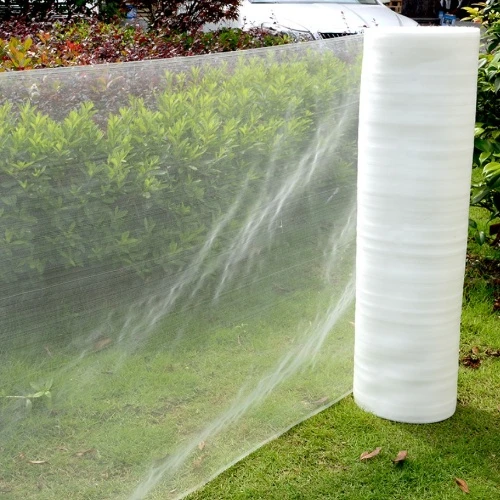-
 Afrikaans
Afrikaans -
 Albanian
Albanian -
 Amharic
Amharic -
 Arabic
Arabic -
 Armenian
Armenian -
 Azerbaijani
Azerbaijani -
 Basque
Basque -
 Belarusian
Belarusian -
 Bengali
Bengali -
 Bosnian
Bosnian -
 Bulgarian
Bulgarian -
 Catalan
Catalan -
 Cebuano
Cebuano -
 China
China -
 Corsican
Corsican -
 Croatian
Croatian -
 Czech
Czech -
 Danish
Danish -
 Dutch
Dutch -
 English
English -
 Esperanto
Esperanto -
 Estonian
Estonian -
 Finnish
Finnish -
 French
French -
 Frisian
Frisian -
 Galician
Galician -
 Georgian
Georgian -
 German
German -
 Greek
Greek -
 Gujarati
Gujarati -
 Haitian Creole
Haitian Creole -
 hausa
hausa -
 hawaiian
hawaiian -
 Hebrew
Hebrew -
 Hindi
Hindi -
 Miao
Miao -
 Hungarian
Hungarian -
 Icelandic
Icelandic -
 igbo
igbo -
 Indonesian
Indonesian -
 irish
irish -
 Italian
Italian -
 Japanese
Japanese -
 Javanese
Javanese -
 Kannada
Kannada -
 kazakh
kazakh -
 Khmer
Khmer -
 Rwandese
Rwandese -
 Korean
Korean -
 Kurdish
Kurdish -
 Kyrgyz
Kyrgyz -
 Lao
Lao -
 Latin
Latin -
 Latvian
Latvian -
 Lithuanian
Lithuanian -
 Luxembourgish
Luxembourgish -
 Macedonian
Macedonian -
 Malgashi
Malgashi -
 Malay
Malay -
 Malayalam
Malayalam -
 Maltese
Maltese -
 Maori
Maori -
 Marathi
Marathi -
 Mongolian
Mongolian -
 Myanmar
Myanmar -
 Nepali
Nepali -
 Norwegian
Norwegian -
 Norwegian
Norwegian -
 Occitan
Occitan -
 Pashto
Pashto -
 Persian
Persian -
 Polish
Polish -
 Portuguese
Portuguese -
 Punjabi
Punjabi -
 Romanian
Romanian -
 Russian
Russian -
 Samoan
Samoan -
 Scottish Gaelic
Scottish Gaelic -
 Serbian
Serbian -
 Sesotho
Sesotho -
 Shona
Shona -
 Sindhi
Sindhi -
 Sinhala
Sinhala -
 Slovak
Slovak -
 Slovenian
Slovenian -
 Somali
Somali -
 Spanish
Spanish -
 Sundanese
Sundanese -
 Swahili
Swahili -
 Swedish
Swedish -
 Tagalog
Tagalog -
 Tajik
Tajik -
 Tamil
Tamil -
 Tatar
Tatar -
 Telugu
Telugu -
 Thai
Thai -
 Turkish
Turkish -
 Turkmen
Turkmen -
 Ukrainian
Ukrainian -
 Urdu
Urdu -
 Uighur
Uighur -
 Uzbek
Uzbek -
 Vietnamese
Vietnamese -
 Welsh
Welsh -
 Bantu
Bantu -
 Yiddish
Yiddish -
 Yoruba
Yoruba -
 Zulu
Zulu
Effective Solutions for Outdoor Safety Netting and Protection Methods
The Importance of Outdoor Safety Netting
As urban development continues to expand, ensuring the safety of public spaces is increasingly vital. One effective way to enhance safety in outdoor areas is through the use of safety netting. Outdoor safety netting serves various purposes, from protecting pedestrians and property from falling objects to creating secure environments for recreational activities. This article explores the importance, applications, and advantages of outdoor safety netting.
The Need for Safety Netting
In bustling urban environments where construction, maintenance, and recreational activities occur daily, the potential for accidents increases significantly. Falling debris from high-rise buildings or construction sites poses a severe risk to pedestrians and adjacent properties. Safety netting acts as a crucial barrier, capturing and containing falling objects, thereby preventing injuries and property damage.
Moreover, outdoor safety netting is not limited to construction sites; it can also be used in recreational facilities such as sports fields, playgrounds, and climbing walls. In sports, for instance, netting can prevent balls from straying into crowded areas, ensuring that spectators and participants remain safe while enjoying the activity.
Applications of Outdoor Safety Netting
Outdoor safety netting can be categorized into various applications based on specific needs
1. Construction Sites Construction netting is often employed to shield pedestrians and vehicles from falling tools, materials, or debris. Heavy-duty netting is specifically designed to withstand significant impacts, protecting individuals from potential hazards.
2. Sports Facilities In sports like soccer, baseball, and golf, netting is essential for containing balls within the playing field, thereby safeguarding onlookers and maintaining the flow of the game.
outdoor safety netting

4. Rooftop Green Spaces As cities increasingly utilize rooftops for gardens and recreational areas, safety netting can provide essential fall protection, preventing accidents while still allowing for vibrant outdoor spaces.
5. Wildlife Protection In natural habitats, safety netting can help protect wildlife from human development while allowing for safe passage for animals, thus maintaining ecological balance.
Advantages of Safety Netting
The advantages of installing outdoor safety netting are numerous and significant
- Enhanced Safety The primary benefit of safety netting is its ability to significantly reduce the risk of accidents. By containing potential hazards, it protects individuals and properties from unforeseen dangers.
- Durability and Versatility Outdoor safety netting is often made from robust materials such as polyethylene or nylon, allowing it to withstand harsh weather conditions and various impacts. Its versatility means it can be tailored for specific applications, ensuring maximum effectiveness.
- Cost-Effective Solution Investing in safety netting can save money in the long run by preventing accidents that could lead to costly lawsuits, repairs, or medical expenses. The implementation of safety measures also demonstrates a commitment to public welfare, which may enhance the reputation of businesses and local authorities.
- Easy Installation and Maintenance Safety netting is typically easy to install and requires minimal maintenance over time, making it a practical choice for various environments.
Conclusion
In conclusion, outdoor safety netting is an essential component of modern safety strategies in both urban and recreational environments. Its ability to protect individuals from hazards, its diverse applications, and its various advantages make it an indispensable tool for ensuring safety and mitigating risks. Whether in construction areas, sports facilities, playgrounds, or natural habitats, safety netting not only enhances security but also promotes a sense of well-being within our communities. As we continue to navigate the challenges of urbanization and recreational complexity, the implementation of safety netting will remain a vital consideration for both safety professionals and the general public.
-
Shipping Plastic Bags for Every NeedNewsJul.24,2025
-
Safety Netting: Your Shield in ConstructionNewsJul.24,2025
-
Plastic Mesh Netting for Everyday UseNewsJul.24,2025
-
Nylon Netting for Every UseNewsJul.24,2025
-
Mesh Breeder Box for Fish TanksNewsJul.24,2025
-
Expanded Steel Mesh Offers Durable VersatilityNewsJul.24,2025











